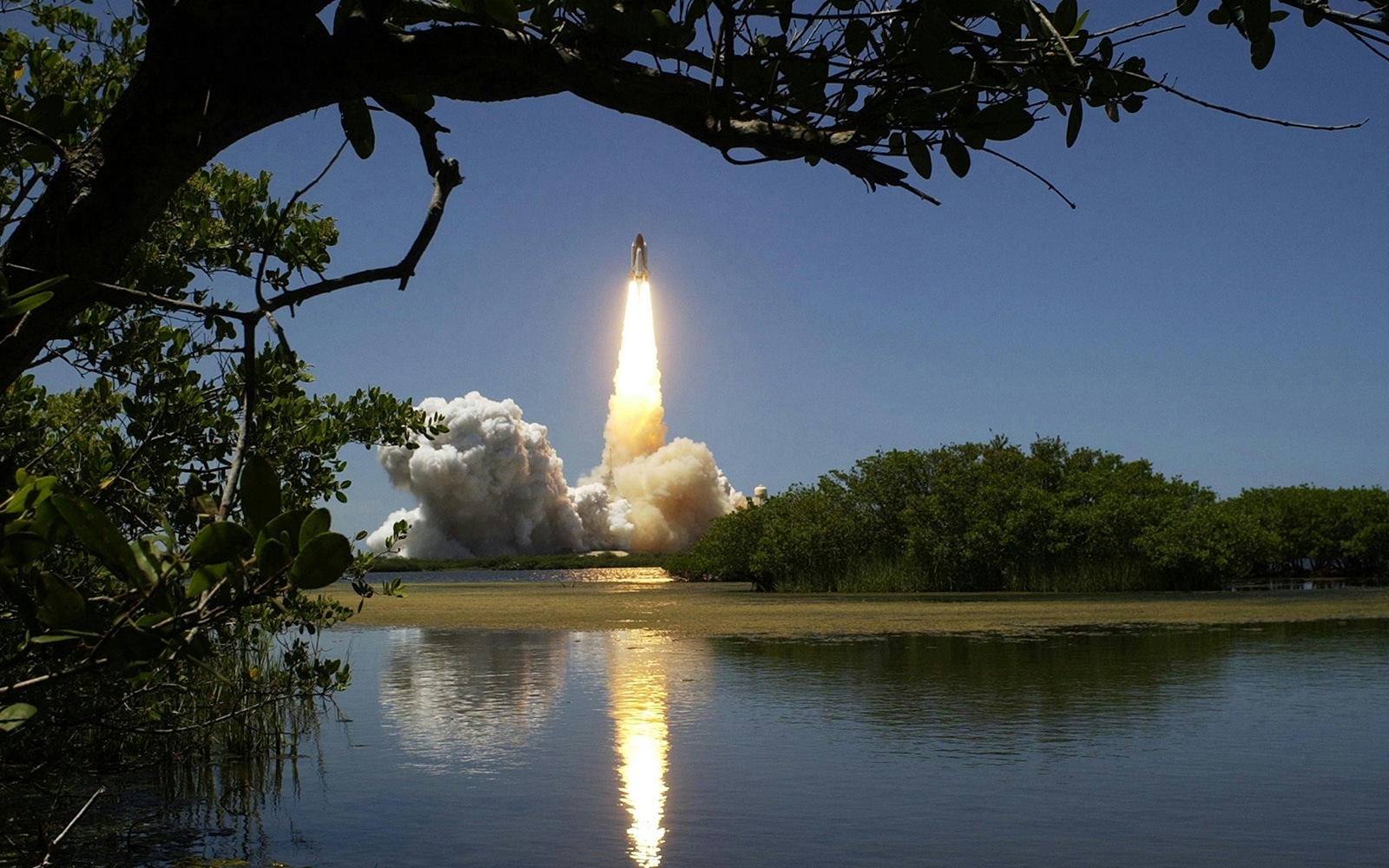- Hypergolic fuels involve mixing two materials that can self-ignite for use as propellants.
- Hypergolic fuels have damaged buildings and hurt people during ground operations where the fuel is handled.
- Thorough planning, effective communication and training, and adherence to protocols and safety measures are critical to reducing incident risks and for safe operations.
Though useful as propellants, hydrazine-based hypergolic fuels are highly toxic, reactive, and pose explosion risks. Even green options like proposed hydrogen peroxide-based hypergolic fuels that are easier on the environment are detrimental to people. Several safety and operational shortcomings were found in investigations of reported unintentional incidents during ground support operations, including no proper measurement of leaks. This article discusses why hypergolic fuels and their components are hazardous and the issues that safety managers must address.
Hypergolic Fuels Use
Hypergolic fuels are combinations of two materials- a fuel and an oxidizer- that spontaneously self-ignite at room temperature because they are very reactive. These fuels eliminate the need for an ignition source, like sparks or heating, and reduce the components in the ignition system, reducing the likelihood of combustion failure. A bonus is a reduction in the weight of the machine. Due to these two properties, hypergolic fuels are propellants for extra-terrestrial space crafts like rockets, space shuttles, and long-range missiles.
Hydrazine-based Hypergolic Propellants
Hydrazine-based hypergolic propellants were among the first to be used and remain popular, as they are easier to store than cryogenic fuels like liquid oxygen. The fuel used is hydrazine or its derivatives like unsymmetrical dimethylhydrazine (UDMH), monomethylhydrazine (MMH), and Aerozine 50 (50/50 mixture of UDMH and hydrazine) by the USA, the UK, and Russia. Space launch vehicle Titan 2 has been propelled by hydrazine hypergolic fuels.
Hydrazine can be combined with two oxidizers- nitrogen tetroxide (N2O4) and nitric acid (NTO). However, the use of N2O4 as the oxidizer is more common. Hydrazine reacts with N2O4 in three stages for combustion and with nitric acid in two stages. The reaction with nitric acid produces a whitish-yellow fog regardless of the occurrence of ignition. Meanwhile, hydrazine reacts with N2O4 to produce red flumes.
Nitrogen tetroxide is a liquid under pressure, which exists in an “equilibrium mixture of colorless dinitrogen tetraoxide (N2O4) and red-brown nitrogen dioxide vapors.” The exact proportion of the mixture depends on temperature and pressure. As temperatures increase and pressure decreases, the proportion of nitrogen dioxide (NO2) vapors increases.
N2O2 → 2 NO2.
Nitrogen tetraoxide is not a fuel in itself, as it is non-flammable and non-explosive. It is a strong oxidizer and denotes on contact with hydrazine and its derivatives. When added to the fire, N2O4 increases the rate and intensity of fire by supplying oxygen. N2O4 has been used with hydrazine derivatives since the 1950s.
Hazards of Hydrazine-based Hypergolics
However, hydrazine and nitrogen tetraoxide are toxic and hazardous, thus highlighting the need for individual and hypergolic gas detection.
Nitrogen tetraoxide and nitrogen dioxide: When liquid N2O4 or NO2 vapor comes into contact with the eyes, skin, and respiratory system, the nitrogen oxides react with water to form nitric acid (HNO3) and nitrous acid (HONO), which destroy tissues. Therefore, they are highly toxic and corrosive.
Exposure to N2O4 can produce symptoms similar to those caused by NO2 in the missile industry. High-concentration fumes result in acute symptoms like headache, coughing, nausea, and chest and stomach pain immediately. After 5 to 72 hours, delayed pulmonary edema can set in and can lead to death within a few hours. Nitrogen dioxide can also lead to poisoning, causing methemoglobinemia.
Exposure to nitrogen dioxide can have long-term health effects, including potential cancer risk due to genetic mutations, although evidence in animals is lacking. It may also harm fetal development and female fertility, with repeated exposure leading to permanent lung damage.
Moreover, some of the nitrogen oxides’s unique properties increase hazard potentials. Nitrogen dioxide is three times heavier than air, and nitrogen tetraoxide evaporates five times faster than water at room temperature.
Hydrazine: Hydrazine is very hazardous because it is very toxic, highly combustible, and detrimental to the environment and equipment integrity.
Exposure to hydrazine can cause short-term health effects such as severe eye and skin irritation, respiratory problems like coughing and wheezing, and severe conditions like pulmonary edema. Also, it can cause headaches, nausea, dizziness, vomiting, seizures, and convulsions. Hydrazine could be carcinogenic, and long-term exposure increases the risk of mutations and cancer, particularly of the lung, liver, and nasal cavities. So, there is no safe level of exposure to it.
Due to the toxicity and explosive nature of hydrazine and nitrogen tetraoxide, efforts are made to minimize the toxic effects of propellants by looking for alternatives.
Hydrogen Peroxide-Based Hypergolics
Hydrogen peroxide is the main alternative explored to replace hydrazine-based hypergolic. Rocket grade hydrogen peroxide or 98% high test peroxide (HTP) is being considered as the non-toxic alternative as it decomposes into water and oxygen. It has actually been used as a propellant since pre-World War II when the Germans used it in the first-ever world rocket-powered aircraft fighter, the Messerschmitt. Later, the Americans used this hypergolic fuel for missiles and the Mercury space capsule.
The hazards reported for H2O2 in the Second World War of spills and leaks were due to faulty valves, seals, and tanks, which destroyed property and caused fatalities.
Hydrogen peroxide is also very oxidative and causes easy combustion of flammable materials above 70% concentrations. So, 98% HTP must be handled carefully, too, as it can be explosive, corrosive, and produce poisonous gases in fires, even if it is less toxic than hydrazine.
The acute health effects of hydrogen peroxide exposure include irritation and burning of the skin and eyes, eye damage, nose and throat irritation upon inhalation, lung irritation causing coughing and shortness of breath, and, in severe cases, pulmonary edema. Symptoms like headache, nausea, dizziness, and vomiting also occur.
Long-term hydrogen peroxide exposure leads to chronic health effects, like genetic mutations and bronchitis. Prolonged exposure also leads to temporary skin and stinging sensations, and higher concentrations can cause skin rash, blisters, and redness.
The other potentially hypergolic compounds being tested are nitric acid and methylimidazolium cyanamides.
Several incidents worldwide have raised the alarm about explosive and toxic hypergolic fuels. As a result, showcasing the importance of hypergolic gas detection.
Why Spills and Fires Occur
NASA compiled a list of unintentional hypergolic spills, explosions, and fires from programs like the Apollo, Space Shuttle, and Titan programs in the US government facilities. The agency analyzed the causes and consequences of the incidents and accidents to avoid reoccurrence in the future. Here are their findings:
- Improper configuration control, such as neglect of vent systems and treating them as non-hazardous, made people complacent. Aging hardware was another problem. Inadequate local cleanliness, like attending to rusty machinery, resulted in accidents and explosions.
- Improper procedural oversight, including development and adherence to the emergency procedures, increased damage and human injury risks.
- An absence of prior ground support design and development, including communication protocols, aggravated critical situations and hindered rescue and containment measures.
- Inadequate training of safety personnel, technicians, and engineers of the potential hazards during fuelling operations has led to fires and explosions. Proper instrumentation knowledge to offset errors also needs to be included.
- The disaster response team needed proper personal protection, fire extinguishing equipment, and spill protection.
- No proper hypergolic evacuation systems were conducted, such as creating a vacuum when disconnecting fittings.
- Timely and advance warnings were not given in 50% of the incidents and explosions. The personnel should know system fluctuations and recognize when to begin safety procedures. Spills should be treated as precursors to explosions, as 42% of spills culminate in fire.

Figure 1: Aerial view of N2O4 vapor cloud from a missile silo. ( Image credits: https://ntrs.nasa.gov/api/citations/20100042352/downloads/20100042352.pdf)
Handling and Hypergolic Gas Detection
So, while hypergolic rocket propellants are necessary for manned and unmanned space travel, ground support systems are hazardous.
Safety managers must review the procedure, machinery, and personal protection equipment used in handling hypergolic fuels to introduce stringent and adequate measures to mitigate design problems and ground operation accidents.
One of the measures emphasized by various reviews and studies is the need to detect vapors and fluids to identify the risks of spills, leaks, and fires. Since personnel got advance notice only 50% of the time, routine and spot checks of the levels of hypergolic fuels should be part of the safety and procedural oversight. Even when a notice was available, the ground staff ignored the information, so proper safety protocol training was necessary.
Fixed and portable sensors that can detect propellant levels below 50 ppm during the transport, storage, and deployment of fuel canisters and give audio and visual alarms when the permissible levels are crossed can alert personnel to the development of a high-risk situation and reduce human error which has been a factor in all incidents. Accurate, reliable detection of hypergolic fuels in real-time, even below room temperatures, is necessary.
Interscan Sensors
Interscan’s GasD® 8000 portable gas analyzers offer devices that detect the currently viable hypergolic fuel components -hydrazine derivatives, nitrogen dioxide, and hydrogen peroxide. These devices are equipped with visual and audio alarms and have an estimation time of less than a second for the toxic components starting from zero ppm with varying resolutions, some as fine as one ppb. Also, the small portable devices can be carried onsite. Interscan offers four devices for nitrogen dioxide, six for hydrogen peroxide, and four for hydrazine. Advance and timely notice and prompt action in leak and spill containment, with proper personal equipment, can reduce injuries and damage.
Written by:
 Vijayalaxmi Kinhal
Vijayalaxmi Kinhal
Science Writer, CID Bio-Science
Ph.D. Ecology and Environmental Science, B.Sc Agriculture
Sources
Davis, S. M., & Yilmaz, N. (2014). Advances in hypergolic propellants: Ignition, hydrazine, and hydrogen peroxide research. Advances in Aerospace Engineering, 2014, 1–9. https://doi.org/10.1155/2014/729313
Desai, S. C., Willitsford, A. H., Sumanasekera, G. U., Yu, M., Tian, W. Q., Jayanthi, C. S., & Wu, S. Y. (2010). Hypergolic fuel detection using individual single-walled carbon nanotube networks. Journal of Applied Physics, 107(11). https://doi.org/10.1063/1.3386513
Jin, Y., Zhang, W., Zhou, Z., Liu, T., Xia, H., Huang, S., & Zhang, Q. (2022). Recent advances in hypergolic ionic liquids with broad potential for propellant applications. FirePhysChem, 2(3), 236-252. https://doi.org/10.1016/j.fpc.2022.04.001
Hypergolic Fuel Leak Sensor. Hypergolic Fuel Leak Sensor | SBIR.gov. (n.d.). https://www.sbir.gov/node/393983
NASA. (n.d.). Llis. NASA. https://llis.nasa.gov/lesson/2196
National Center for Biotechnology Information (2024). PubChem Compound Summary for CID 25352, Dinitrogen tetroxide. Retrieved February 13, 2024 from https://pubchem.ncbi.nlm.nih.gov/compound/Dinitrogen-tetroxide.
NOAA Office of Response and Restoration, U. G. (n.d.). Search Chemicals. NOAA. https://cameochemicals.noaa.gov/chemical/4075
Nufer, B. (n.d.). Hypergolic propellants: The handling hazards and lessons learned from use. Retrieved from https://ntrs.nasa.gov/api/citations/20100042352/downloads/20100042352.pdf
Right to know hazardous substance fact sheet-Hydrazine. (n.d.-b). https://nj.gov/health/eoh/rtkweb/documents/fs/1006.pdf
Right to know hazardous substance fact sheet-Nitrogen Dioxide. (n.d.-b). https://nj.gov/health/eoh/rtkweb/documents/fs/1376.pdf
Rarata, G. & Florczuk, W. (2017). The handling hazards of propellants hypergolic with hydrogen peroxide. Retrieved from https://www.researchgate.net/publication/318216417_THE_HANDLING_HAZARDS_OF_PROPELLANTS_HYPERGOLIC_WITH_HYDROGEN_PEROXIDE/link/59d36dd30f7e9b4fd7ffae4e/download

